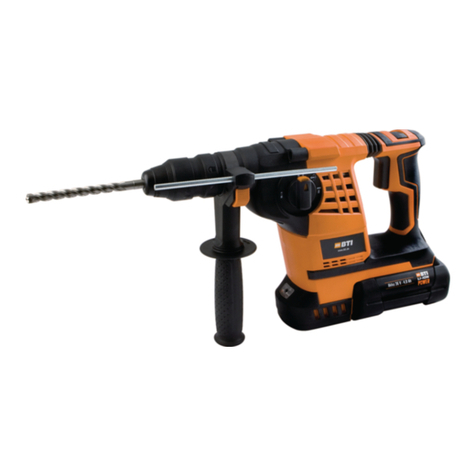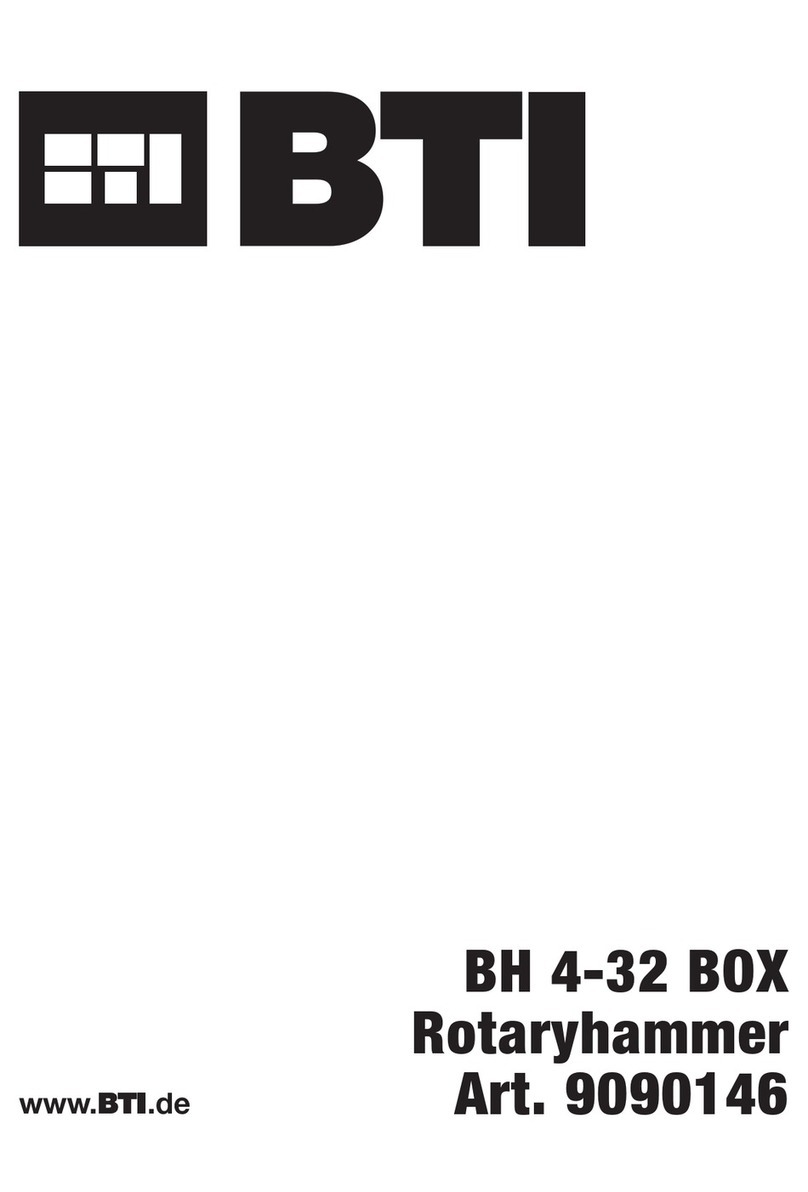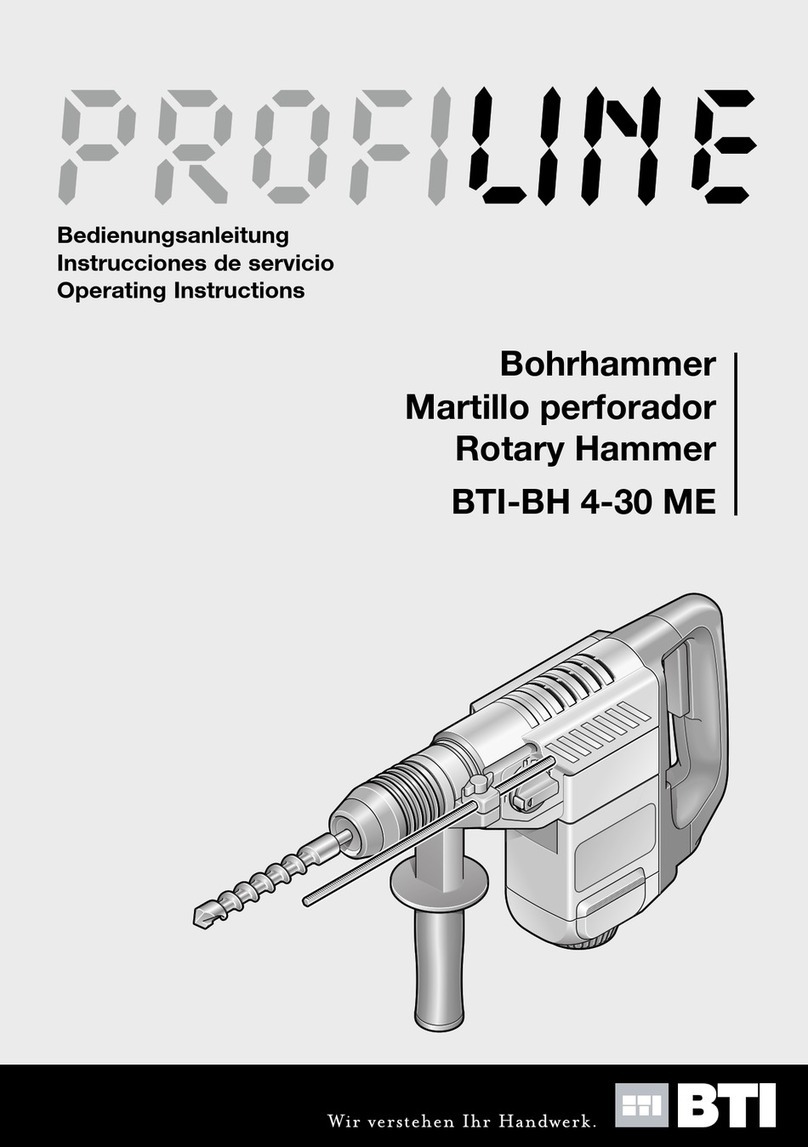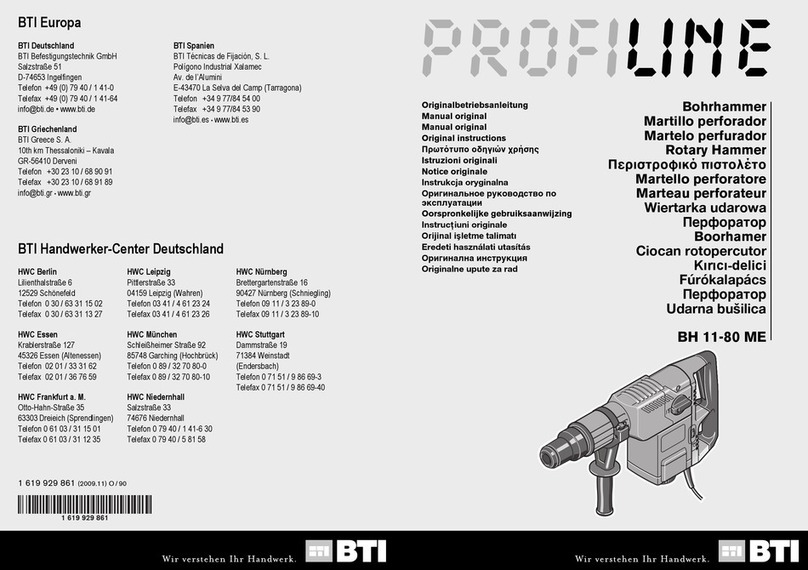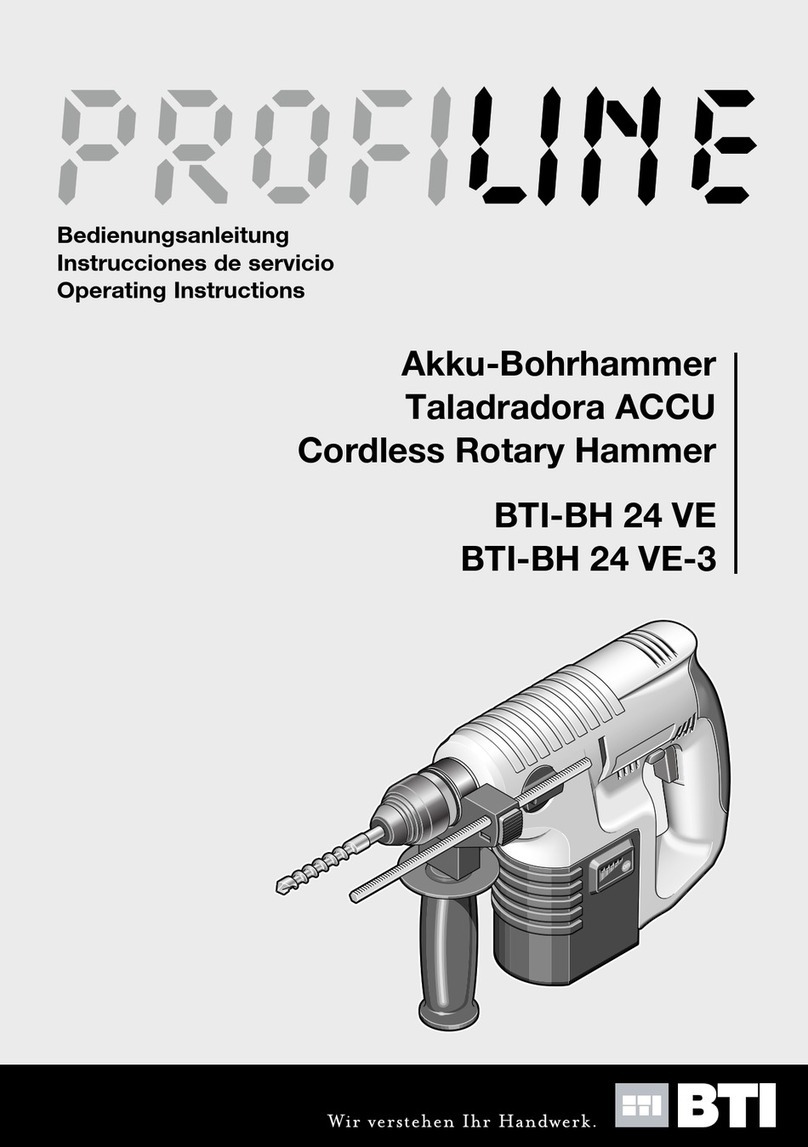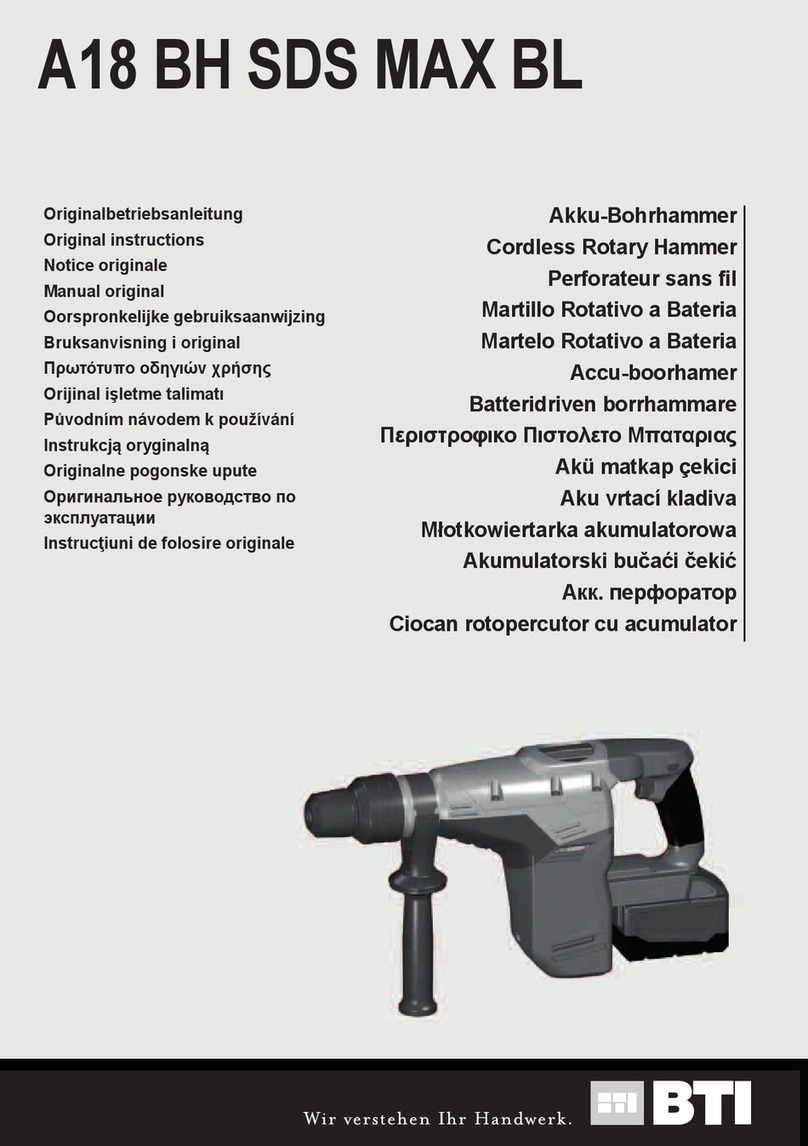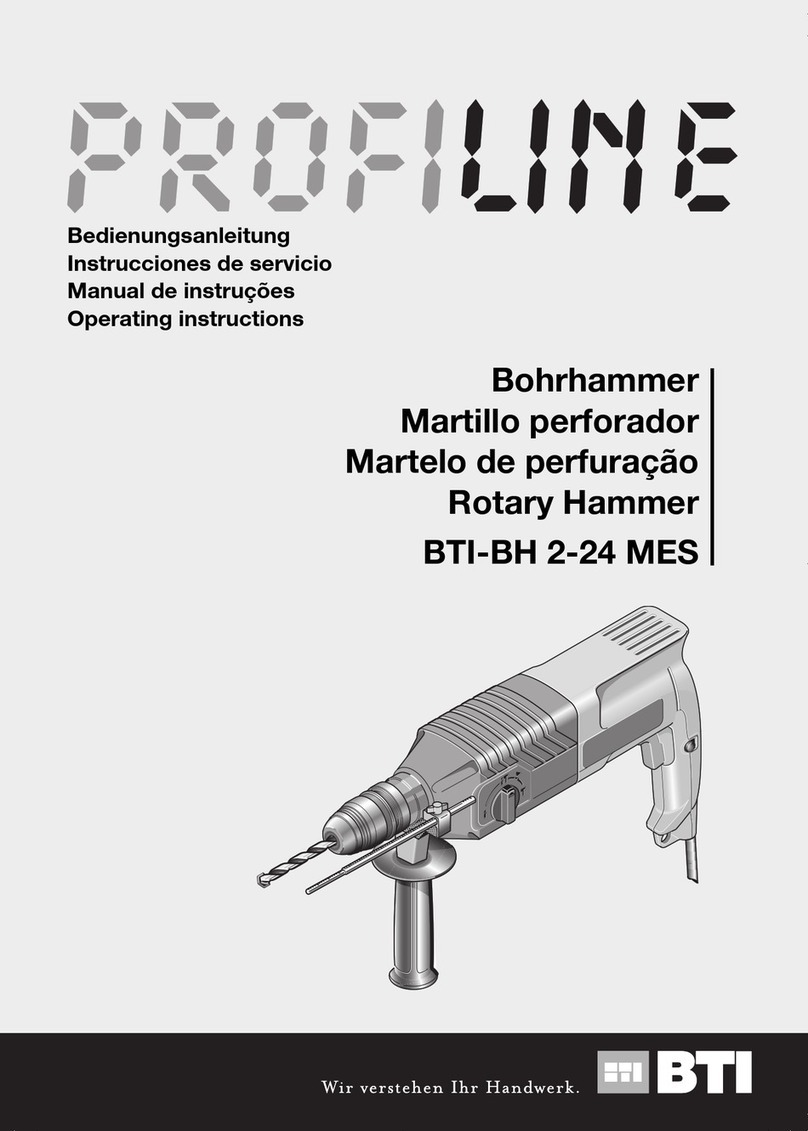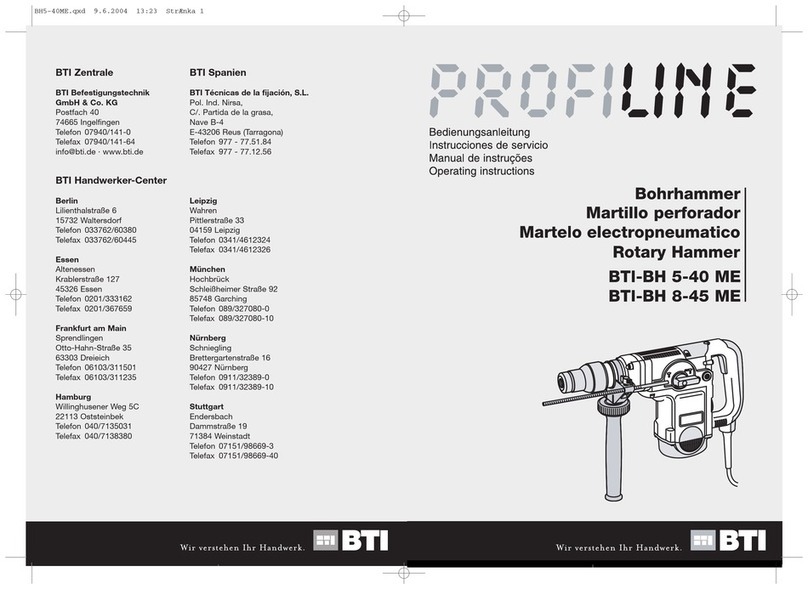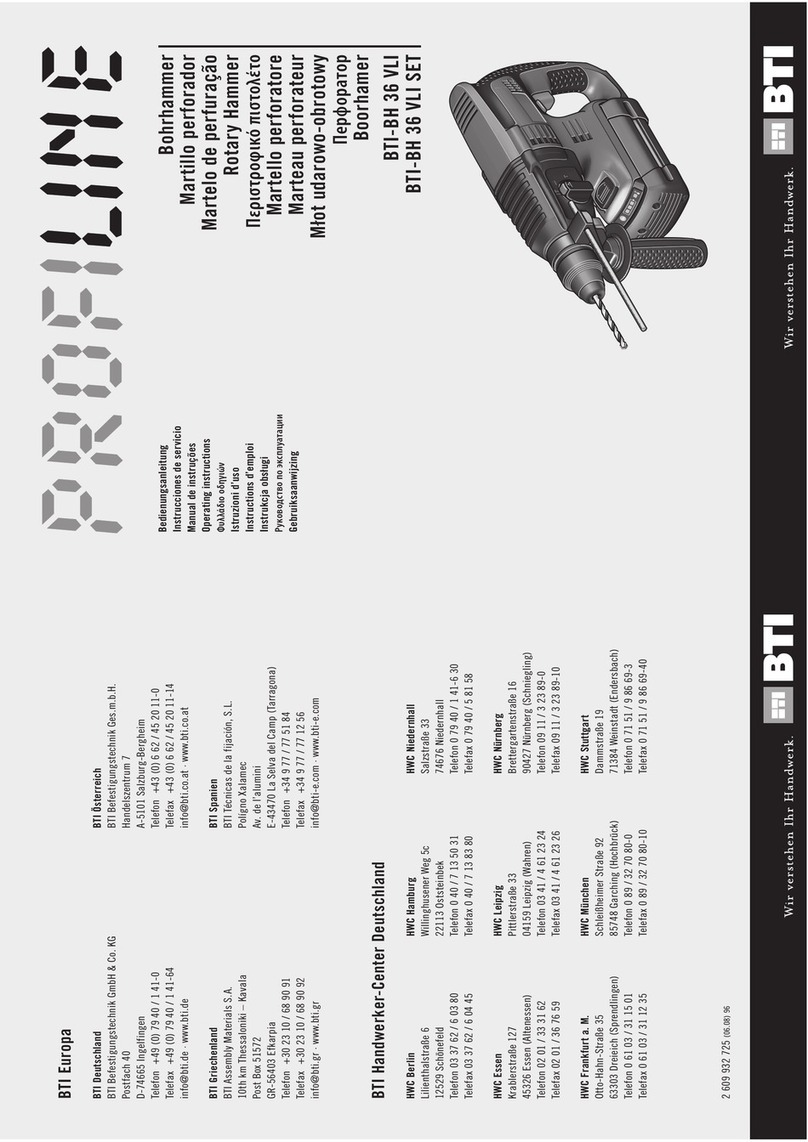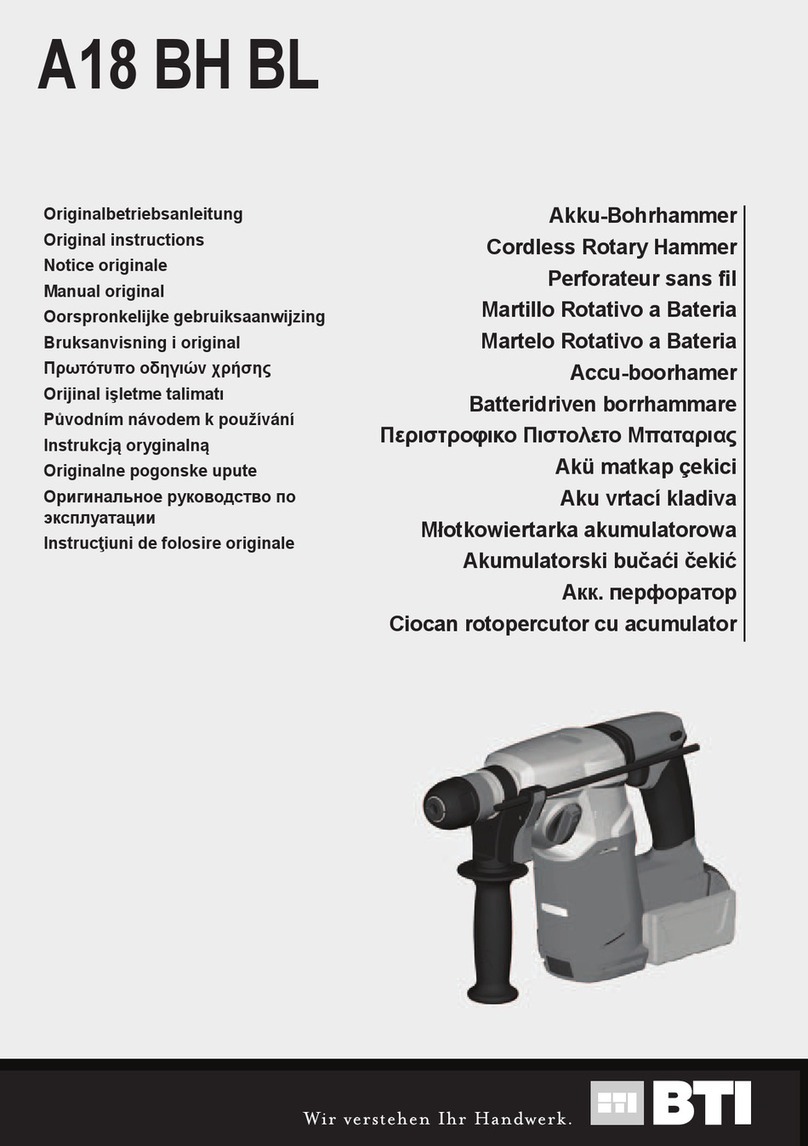
Deutsch–1
1 619 929 704 • (05.06) T
1 ALLGEMEINE SICHERHEITSHINWEISE
Sämtliche Anweisungen sind zu
lesen. Fehler bei der Einhaltung der
nachstehend aufgeführten Anwei-
sungen können elektrischen Schlag, Brand und/oder
schwere Verletzungen verursachen. Der nachfolgend
verwendete Begriff „Elektrowerkzeug“ bezieht sich auf
netzbetriebene Elektrowerkzeuge (mit Netzkabel) und
auf akkubetriebene Elektrowerkzeuge (ohne Netzka-
bel).
Bewahren Sie diese Anweisungen gut auf.
1) Arbeitsplatz
a) Halten Sie Ihren Arbeitsbereich sauber und
aufgeräumt. Unordnung und unbeleuchtete Ar-
beitsbereiche können zu Unfällen führen.
b) Arbeiten Sie mit dem Gerät nicht in
explosionsgefährdeter Umgebung, in der
sich brennbare Flüssigkeiten, Gase oder
Stäube befinden. Elektrowerkzeuge erzeugen
Funken, die den Staub oder die Dämpfe entzün-
den können.
c) Halten Sie Kinder und andere Personen
während der Benutzung des Elektrowerk-
zeugs fern. Bei Ablenkung können Sie die Kon-
trolle über das Gerät verlieren.
2) Elektrische Sicherheit
a) Der Anschlussstecker des Gerätes muss in
die Steckdose passen. Der Stecker darf in
keiner Weise verändert werden. Verwenden
Sie keine Adapterstecker gemeinsam mit
schutzgeerdeten Geräten. Unveränderte Ste-
cker und passende Steckdosen verringern das
Risiko eines elektrischen Schlages.
b) Vermeiden Sie Körperkontakt mit geerde-
ten Oberflächen wie Rohren, Heizungen,
Herden und Kühlschränken. Es besteht ein
erhöhtes Risiko durch elektrischen Schlag, wenn
Ihr Körper geerdet ist.
c) Halten Sie das Gerät von Regen oder Nässe
fern. Das Eindringen von Wasser in ein Elektro-
gerät erhöht das Risiko eines elektrischen Schla-
ges.
d) Zweckentfremden Sie das Kabel nicht, um
das Gerät zu tragen, aufzuhängen oder um
den Stecker aus der Steckdose zu ziehen.
Halten Sie das Kabel fern von Hitze, Öl,
scharfen Kanten oder sich bewegenden
Geräteteilen. Beschädigte oder verwickelte
Kabel erhöhen das Risiko eines elektrischen
Schlages.
e) Wenn Sie mit einem Elektrowerkzeug im
Freien arbeiten, verwenden Sie nur Verlän-
gerungskabel, die auch für den Außenbe-
reich zugelassen sind. Die Anwendung eines
für den Außenbereich geeigneten Verlänge-
rungskabels verringert das Risiko eines elektri-
schen Schlages.
3) Sicherheit von Personen
a) Seien Sie aufmerksam, achten Sie darauf,
was Sie tun und gehen Sie mit Vernunft an
die Arbeit mit einem Elektrowerkzeug. Be-
nutzen Sie das Gerät nicht, wenn Sie müde
sind oder unter dem Einfluss von Drogen,
Alkohol oder Medikamenten stehen. Ein Mo-
ment der Unachtsamkeit bei dem Gebrauch des
Gerätes kann zu ernsthaften Verletzungen füh-
ren.
b) Tragen Sie persönliche Schutzausrüstung
und immer eine Schutzbrille. Das Tragen per-
sönlicher Schutzausrüstung, wie Staubmaske,
rutschfeste Sicherheitsschuhe, Schutzhelm oder
Gehörschutz, je nach Art und Einsatz des Elek-
trowerkzeuges, verringert das Risiko von Verlet-
zungen.
c) Vermeiden Sie eine unbeabsichtigte Inbe-
triebnahme. Vergewissern Sie sich, dass
das Elektrowerkzeug ausgeschaltet ist, be-
vor Sie den Stecker in die Steckdose ste-
cken. Wenn Sie beim Tragen des Gerätes den
Finger am Schalter haben oder das Gerät einge-
schaltet an die Stromversorgung anschließen,
kann dies zu Unfällen führen.
d) Entfernen Sie Einstellwerkzeuge oder
Schraubenschlüssel, bevor Sie das Gerät
einschalten. Ein Werkzeug oder Schlüssel, der
sich in einem drehenden Geräteteil befindet,
kann zu Verletzungen führen.
e) Überschätzen Sie sich nicht. Sorgen Sie für
einen sicheren Stand und halten Sie jeder-
zeit das Gleichgewicht. Dadurch können Sie
das Gerät in unerwarteten Situationen besser
kontrollieren.
f) Tragen Sie geeignete Kleidung. Tragen Sie
keine weite Kleidung oder Schmuck. Halten
Sie Haare, Kleidung und Handschuhe fern
von sich bewegenden Teilen. Lockere Klei-
dung, Schmuck oder lange Haare können von
sich bewegenden Teilen erfasst werden.
g) Wenn Staubabsaug- und -auffangein-
richtungen montiert werden können,
vergewissern Sie sich, dass diese ange-
schlossen sind und richtig verwendet wer-
den. Das Verwenden dieser Einrichtungen ver-
ringert die Gefährdungen durch Staub.
4) Sorgfältiger Umgang mit und Gebrauch von
Elektrowerkzeugen
a) Überlasten Sie das Gerät nicht. Verwenden
Sie für Ihre Arbeit das dafür bestimmte
Elektrowerkzeug. Mit dem passenden Elektro-
werkzeug arbeiten Sie besser und sicherer im
angegebenen Leistungsbereich.
